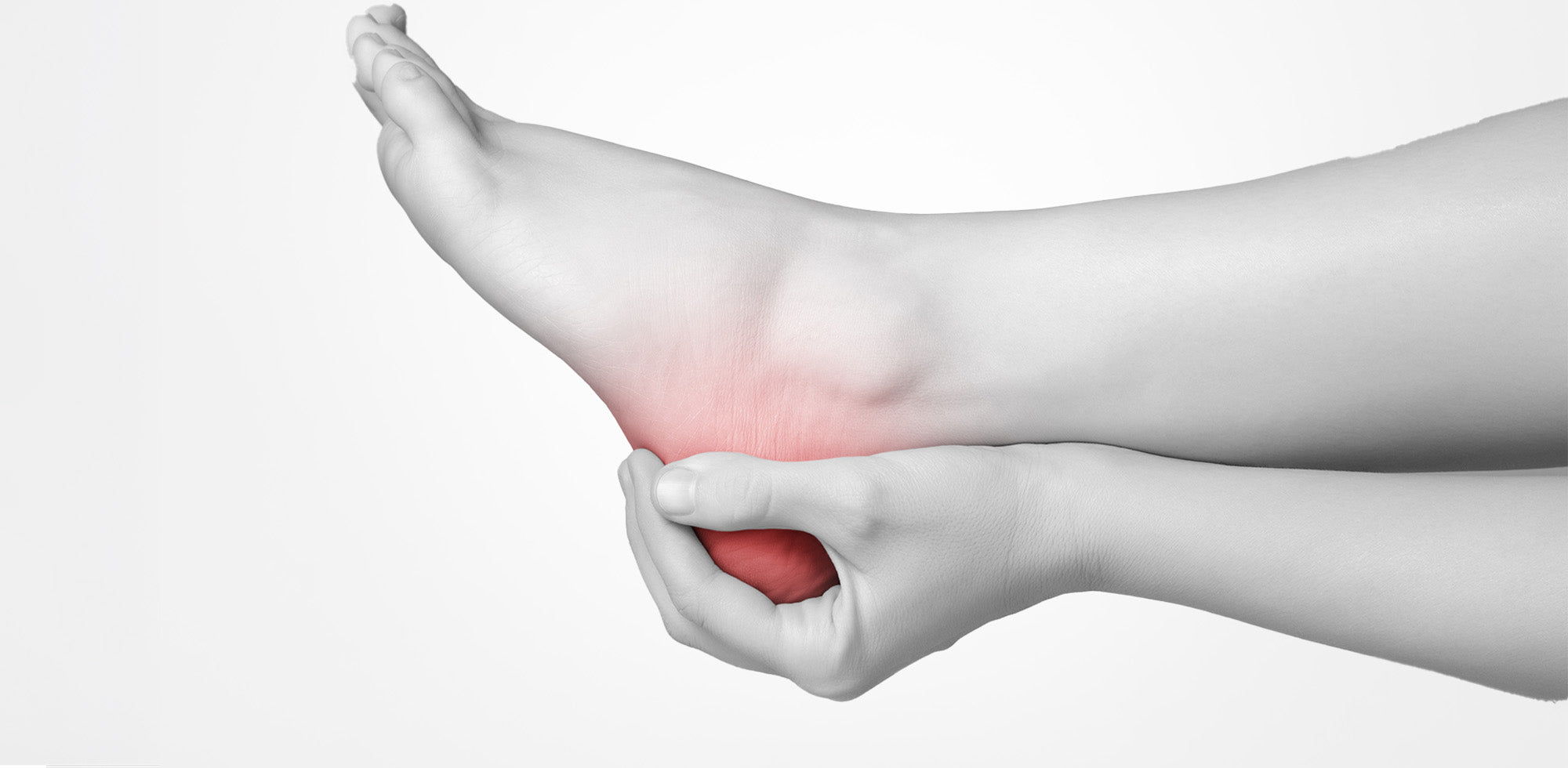Sever's disease can make your child's teenage growth spurts a painful experience. Despite the name, this is not actually a disease - it is a heel injury. If you have a particularly active child who plays sports like gymnastics, basketball, or soccer that involve a lot of jumping or running on hard surfaces, they can put additional strain on already overstretched ligaments and tendons. The tension results in pain and swelling at the point where the growing heel is attached to the tendons.
Because of growth spurts, your child's heel bone develops faster than the surrounding leg muscles, ligaments, and tendons. In fact, your child's heel is one of their first body parts to achieve full adult size. If the associated structures in the leg do not grow at an equally fast rate, they will be overstretched.
Click on Causes, Symptoms, and Treatments tab below to learn more.
Causes
Sever's Disease Causes
Boys are more likely to suffer from Sever's disease. Because their growth spurts come later than those of girls, the condition typically occurs between the ages of 10 and 15. On the other hand, girls usually experience it between the ages of 8 and 13.
Children and adolescents' bones have a special area of cartilage at their ends to facilitate development as they get older called a growth plate. After their teenage years, when your child is fully grown, these growth plates are replaced by solid bone. Before this happens, the growth plates are much weaker than the surrounding ligaments and tendons, making them vulnerable to trauma.
This condition affects the area of bone growth at the back of the child's heel. This growth plate is the anchor point for your child's Achilles tendon – a strong band of tissue that connects the heel bone to their calf muscles at the back of the leg.
Repeated jumping, running, and other high-impact play and sports activities can cause stress of the heel bone growth plate. The additional stress of pulling the already overstressed Achilles tendon from its attachment point causes further irritation of the area.
Sever’s disease often occurs during the same period in a child’s growth as Osgood-Schlatter disease.
Symptoms
Sever's Disease Symptoms
There are several factors that your doctor takes into consideration when diagnosing Sever's disease. There are:
- How active the child is
- A history of Sever's disease symptoms
- Results of a physical examination
If your doctor suspects Sever's disease, he or she may perform a squeeze test, where they apply pressure on both sides of the heel to see if it causes pain. The doctor may sometimes order an MRI or x-ray to eliminate other possible causes of the heel pain.
Sports-related activity or vigorous play brings about painful symptoms for a child suffering from Sever's disease. In a few cases, both heels may exhibit symptoms of this condition, but one foot is often worse than the other.
You should contact your child's doctor as soon as possible if they start to exhibit any of the following:
- Pain in the heel area that worsens with activity
- Redness and tenderness to the touch
- Stiff feet when they wake up in the morning
- Swelling.
This condition lasts two to three months on average, though it may recur over several years in some people.
Treatment
Sever's Disease Treatment
Simple home remedies, a change in footwear, over-the-counter pain medication, rest, and a range of stretching and strength training exercises can relieve the pain of Sever's disease, allowing your child to return to their normal active lifestyle. Do not let your child's growing pains slow them down. Medi-Dyne has a range of physical therapy products for Sever's Disease treatment.
FOR IMMEDIATE RELIEF
Cushion and Support Products:
Products that offer support to the feet, such as orthotic inserts or heel cups, can provide cushioning and arch support to evenly distribute pressure across the foot. This, in turn, reduces stress on the heel and can promote proper alignment, which is crucial for alleviating discomfort and facilitating healing.
Recommended products:
 Tuli's® Heavy Duty Heel Cups™ ★★★★★ Heavy Duty Heel Cups offer cushion and support to the heel, distributing the weight of the body to the outer portion of the foot. Heel cups in children’s athletic shoes can also serve as a preventive measure against Sever’s disease. These are podiatrist developed heel cups and provide relief by cradling and cushioning the heel bone. |
 Tuli's® The X Brace® ★★★★★ The unique “X” design of our patented foot brace provides support and reduces arch pressure very similar to how Low-Dye taping works but without all the expertise, time and tape necessary. This support of the arch also helps offset over-pronation, effectively addressing what can be debilitating foot pain. |
 Tuli's® The X Brace® +PLUS ★★★★★ Provides support, similar to how Low-Dye taping works, and effectively addresses what can be debilitating foot discomfort. The X Brace +PLUS offers an added strap to ensure optimal position and worry-free, all-day wear. No adjusting is necessary. |
 Tuli's® Cheetah® Heel Cup with Compression Sleeve ★★★★★ The heel and ankle supports that gymnasts and dancers count on! Tuli's® Cheetah® provide immediate relief from heel pain by cushioning the area of pain and elevating the heel bone. |
 Tuli's® Cheetah® Gen2 Heel Cup with Compression Sleeve ★★★★★ The heel and ankle supports that gymnasts and dancers count on! Tuli's® Cheetah® Gen2 provide immediate relief from heel pain by cushioning the area of pain and elevating the heel bone. |
PLEASE NOTE: The information on this website and article is for information only and should not be used as a substitute for consulting your doctor. Consult your doctor for proper diagnosis and rehabilitation














